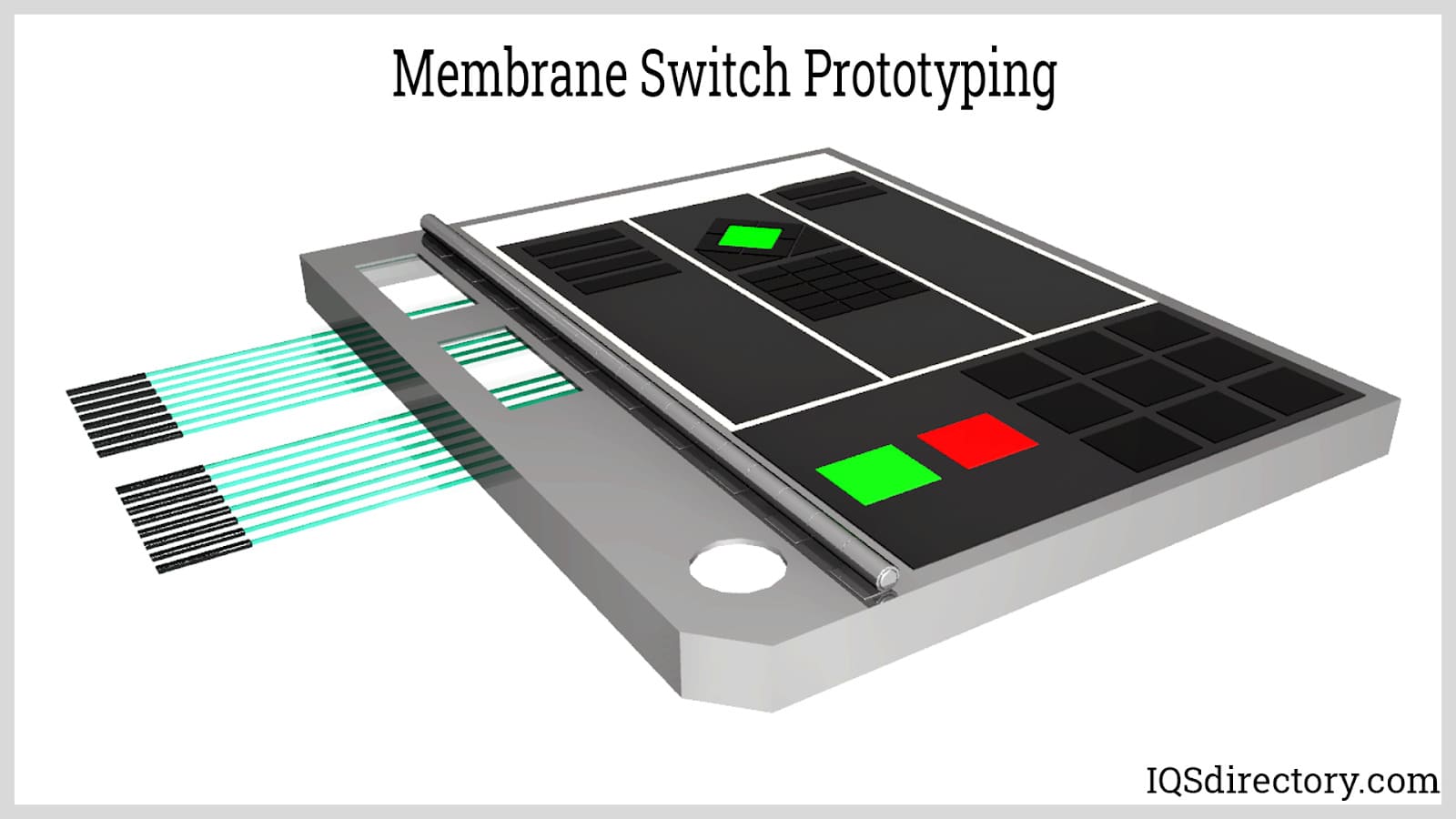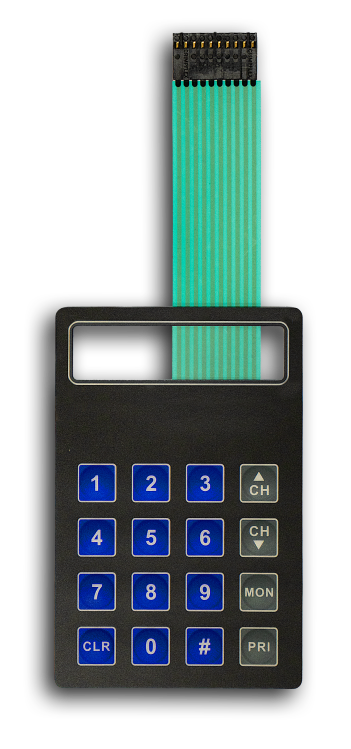How Membrane Switches Are Designed for Easy Maintenance and Repair
Recognizing the Value of Membrane Switches in Interface
Membrane switches are essential parts in the layout of reliable individual interfaces, facilitating not only functionality however additionally enhancing visual charm and user interaction. Their one-of-a-kind attributes, such as resistance to customizable designs and environmental variables, make them ideal for a diverse range of applications across several sectors. As we discover the various benefits and future fads related to Membrane modern technology, it ends up being clear that these buttons are greater than simply elements; they stand for a convergence of innovation and functionality. The ramifications of this modern technology on individual experience are worth taking a look at better.
What Are Membrane Switches?

The spacer layer, which contains glue homes, allows for the separation of the circuit layer from the overlay, making certain that the switch stays in a non-activated state up until pushed. When pressure is applied to the overlay, it compresses the spacer layer, connecting the space and completing the circuit in the underlying layer. This design not just decreases the physical area needed for standard mechanical switches however also improves the toughness of the gadget, as Membrane switches are usually resistant to dust, moisture, and various other environmental aspects.
Frequently discovered in applications varying from consumer electronics to clinical tools, Membrane switches are indispensable to contemporary technology, offering a efficient and user-friendly interface that aligns with modern style demands.
Benefits of Membrane Switches
While countless switch modern technologies exist, Membrane Switches offer distinct benefits that make them particularly desirable in different applications. One of the primary benefits of Membrane buttons is their portable style, which permits space-saving applications in devices where property is limited. Their thin profile not only improves visual charm however also assists in lightweight building and construction.
Another significant benefit is their resistance to environmental factors. Membrane switches are generally secured against moisture, dust, and contaminants, making them optimal for usage popular atmospheres, such as clinical gadgets and industrial devices. This durability extends the lifespan of the button, minimizing upkeep prices and improving dependability.
Moreover, Membrane buttons can be tailored to fulfill particular design needs, integrating distinct graphics and colors that enhance customer interaction. Their tactile responses choices can likewise be customized to offer a satisfying individual experience. Furthermore, Membrane buttons are cost-effective, particularly in high-volume applications, as they can be generated successfully.
Applications in Numerous Industries

In the consumer electronic devices market, Membrane switches are common in tools such as microwaves, cleaning machines, and remote controls. Their responsive comments and aesthetic alternatives improve customer experience while supplying a streamlined, modern-day appearance. In addition, auto producers make use of Membrane switches in dashboard controls and infotainment systems, where our website area is restricted, and user engagement is crucial.
In addition, the industrial field leverages Membrane buttons in control panels for machinery and equipment, permitting intuitive operation in commonly severe environments. Their resistance to chemicals and dampness makes certain longevity and reliability in these applications. On the whole, the adaptability of Membrane Switches adds dramatically to their extensive usage, making them vital in numerous technological domains.
Style Considerations for Membrane Buttons

When creating Membrane buttons, a number of essential factors to consider must be taken into account to make certain optimal functionality and individual experience. To start with, the choice of products is critical; choosing durable, premium substratums can enhance the button's durability and resistance to ecological variables such as wetness and temperature variations.
Second of all, the layout of the visuals overlay should focus on clearness and simplicity of usage. Icons and text must be clear, and the layout needs to assist in intuitive interaction (membrane switches). Furthermore, tactile responses is crucial; incorporating a tactile dome or other systems can improve the individual experience by supplying physical confirmation of activation
One more important variable is the button's electrical performance. Designers must make certain that the conductive traces are appropriately made to minimize resistance and avoid signal interference. This includes analyzing the needed actuation force and making certain compatibility with the electronic components they will user interface with.

Future Fads in Membrane Modern Technology
As innovation proceeds to advancement, Membrane buttons are positioned to evolve significantly, driven by technologies in materials and making techniques. One emerging fad is the his response unification of innovative products, such as adaptable substratums and conductive inks, which boost toughness and reduce the general weight of Membrane buttons. These materials not only improve the responsive feedback yet also permit for the design of buttons that can withstand harsher environmental problems.
Furthermore, the integration of touch-sensitive modern technologies is transforming conventional Membrane Switches into even more interactive interface. Capacitive touch sensors embedded within Membrane button panels can provide a much more responsive and instinctive customer experience, lining up with the growing need for sleek, contemporary layouts in customer electronic devices.
Furthermore, innovations in printing strategies, such as electronic and 3D printing, make it possible for fast prototyping and personalization of Membrane switches. This flexibility allows makers to react quicker to market demands and customer preferences.
Lastly, sustainability is becoming a substantial emphasis, with makers discovering eco-friendly materials and processes. As these trends unfold, the future of Membrane technology guarantees improved performance, aesthetic charm, and ecological duty, solidifying their function in sophisticated interface across different sectors.
Final Thought
In conclusion, Membrane Switches stand for an essential element in the design of customer interfaces, integrating functionality with aesthetic versatility. As innovations a knockout post in innovation continue, the advancement of Membrane switches is anticipated to additional improve individual interfaces, driving innovation and boosting use in an increasingly complex technical landscape.
Membrane switches are integral parts in the layout of efficient individual interfaces, facilitating not only functionality but additionally enhancing visual appeal and customer interaction.Membrane Switches serve as a vital component in different user interfaces, facilitating a smooth interaction in between customers and electronic gadgets.While numerous button modern technologies exist, Membrane Switches deal distinctive advantages that make them specifically desirable in different applications.In addition, Membrane buttons can be tailored to fulfill certain design requirements, integrating one-of-a-kind graphics and shades that boost individual interaction.In verdict, Membrane Switches represent an essential component in the design of customer interfaces, incorporating functionality with aesthetic versatility.